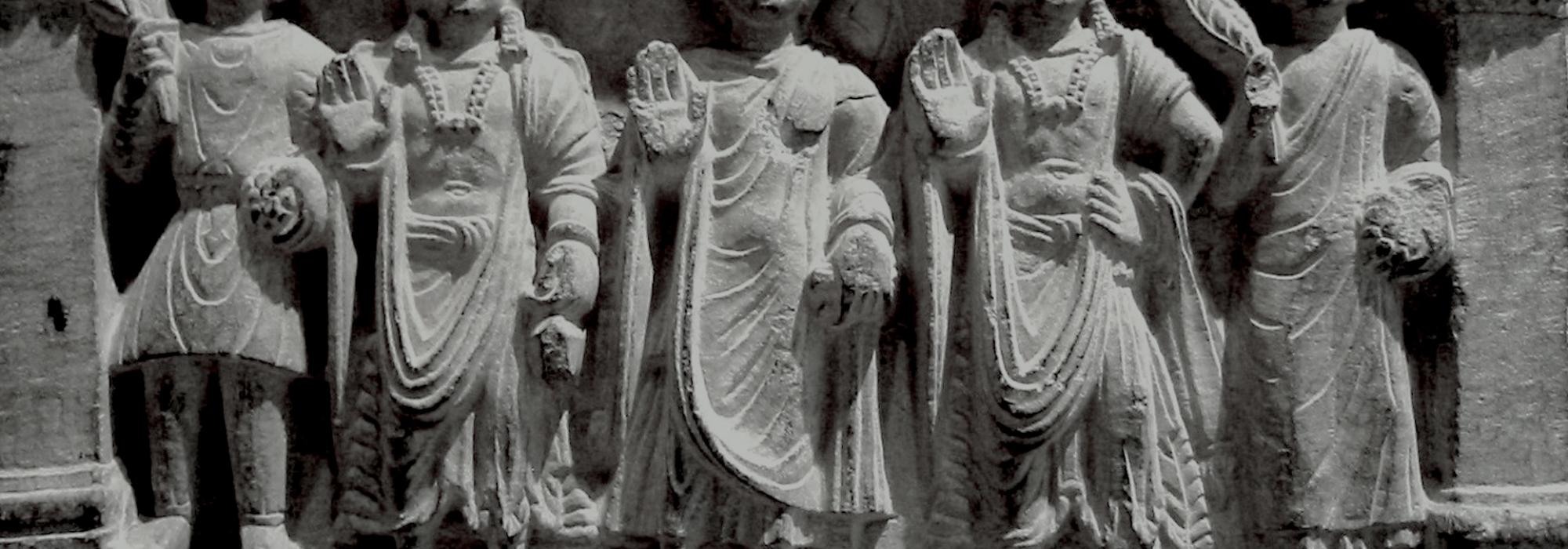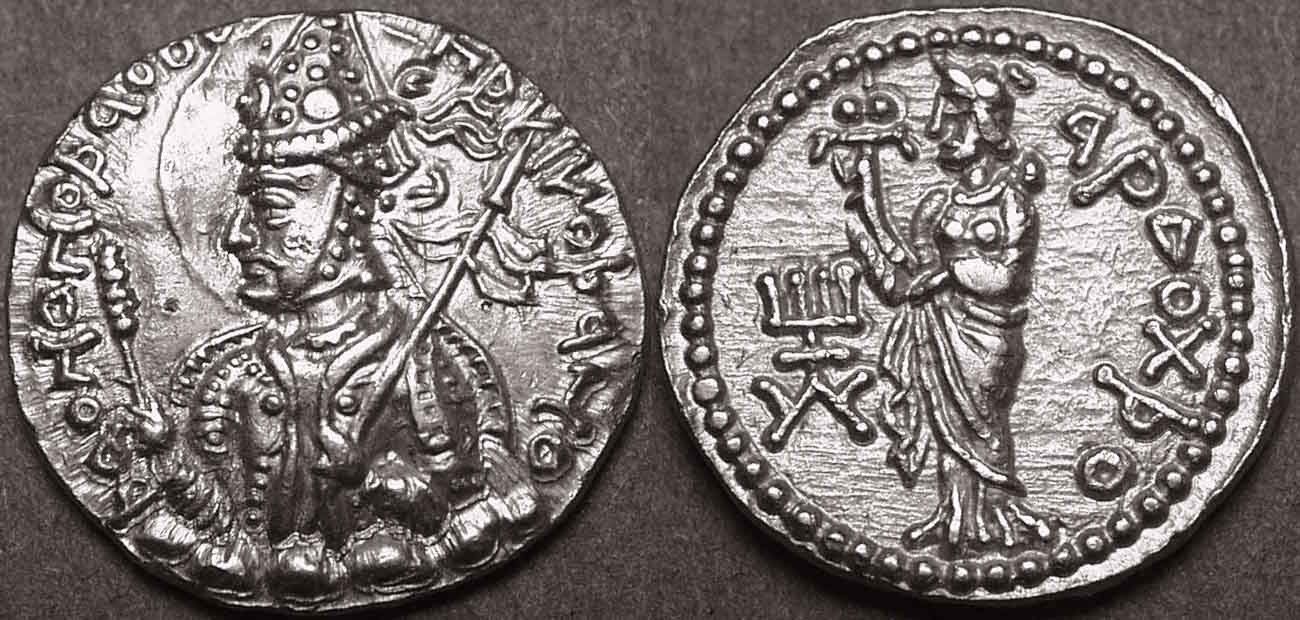Pushyamitra Shunga tried to liberate Bharata’s lands under Greek occupation. The Greek invasion that began with Alexander continued till the time of Menander. The same Menander came to be known as Milindara later. Buddhists texts mention his name. The dialogue between Nagasena and Menander is recorded in the Pali (Magadhi) text ‘Milinda Panho.’ For a prolonged period—nearly three hundred years—the Ionian incursions were a recurring feature. Subsequently, they were assimilated into the mainstream Indian culture. They were referred to as ‘Śuddha Śūdras’ (pure Śūdras), or ‘Vrātya Kṣatriyas’ (fallen Kṣatriyas), meaning the Kṣatriyas who had abandoned noble traditions. In essence, all of them became a part of Sanātana-dharma.
This state of affairs existed in Sanātana-dharma even until the time of Chandragupta Vikramaditya and Kumaragupta. We learn from many historical treatises and inscriptions that until the fifth and sixth centuries CE, this sort of cultural intermingling and assimilation was robust. People from numerous countries, communities, and cultures came here and adopted their preferred varṇa, be it Brāhmaṇa, Vaishya and others. For instance, the Nagāra-brāhmaṇas of North India – with surnames such as Nagar, Bhatnagar, etc. – originally belonged to other tribes; the same applies to the Citpāvana-brāhmaṇas. A similar phenomenon occurred in the realm of Kṣatriyas too.
Commander Pushyamitra, who founded the Shunga dynasty, was not partial to a specific religious sect or clan. Neither did he promote any particular sect or clan by granting them special favours for their advancement, nor did he oppress the others. Communist historians have wantonly twisted the facts and have polluted the historical discourse. They don’t wish to see our country united.
Commander Pushyamitra performed the Aśvamedha-yāga. The Mahābhāṣya stands testimony to the fact that Pushyamitra conducted the Aśvamedha under the spiritual guidance of Sage Pantanjali in Vidisha for the reinvigoration of national spirit. The phrase ‘puṣyamitraṃ yājayāmaḥ’ occurs in the Mahābhāṣya. Sanchi lies at a distance of about fifty kilometres from Bhopal, the capital of Madhya Pradesh. Vidisha is five kilometres from here. A Greek named Heliodorus accepted bhāgavata-dīkṣā and established a Viṣṇu pillar in Vidisha. It was constructed nearly two-thousand two hundred years ago. The accomplishment of the Shungas lies in their enabling the assimilation of foreigners into the fold of Sanātana dharma.
What took place here was not religious conversion; after all, the conversion effected using guile and force will not last long. The ideal path is to embrace another faith after recognizing its values and wholeheartedly appreciating it. Many have embraced Santana Dharma in this manner. We do not find any instance where force or guile has been used by any practitioner of Sanātana dharma to convert others into his fold. Neither did they plant the seed of fear of this world or the other. There is another important reason for this.
The Greeks, Pahlavis, and Scythians belonged to faiths that were consonant with Sanātana dharma. However, this was not the case with Christianity and Islam. These Abrahamic religions have a single god, who is extremely envious. He is an amalgam of such jealousy and intolerance that he expressly forbids His followers from looking to other gods. He is a power-loving, unhinged tyrant who constantly infuses the fear of hell and the temptation of heaven.
But the Greeks, Scythians, and Pahlavis were unlike the Abrahamic adherents; they were descendents of the same people who had migrated from India ages ago. The Persians were extremely close to the Vedic tradition; they were worshippers of Agni (sacred fire) and were Ātmayājis (those who performed yajña of the Self) just like the adherents of Sanātana dharma. Even the Greeks had a similar tradition of worshipping multiple deities, had faith in yajñas, and were able to realize multiple forms of the Supreme in nature. The Greek ‘Zeus’ is cognate with the Sanskrit ‘dyau’ (which means ‘sky’), ‘Gaia,’ cognate with ‘jya’ (which means ‘earth’), and other words that indicate that both cultures worshipped nature deities; our equivalent deities emanating from these root words are the dyāva-pṛthivī. Aphrodite is the goddess of beauty in the Greek tradition. What is called ‘Aphrodita’ in Greek is equivalent to ‘apsūditā’ (apsusarantīti apsarasaḥ = those who move about in water are apsaras) in Sanskrit.
The Greeks assimilated into Sanātana dharma because they were able to easily identify themselves with its language, ritual (yajña), and deities. Greeks had no prophets. There were no middlemen between the devotee and the deities. For this reason there were no obstacles or opposition in the process of their embrace of Sanātana dharma. Therefore this doesn’t count as religious conversion. Apart from Sanātana dharma, the Greeks also pursued other branches and offshoots such as Buddhism. Milinda was a Buddhist.
Buddhism back then was not as it is now. Today’s neo-Buddhists know nothing other than a single-minded hatred against Sanātana dharma. There are numerous glaring errors emanating from the writings of neo-Bhikkus and their householder disciples. They never learnt Sanskrit. They never bothered to understand Sanātana dharma. Neither do they understand Pali nor have they studied Buddhism with a broadminded approach. By taking the path of least resistance, they have learnt nothing. Therefore, all their writings are substandard.
In the Indian tradition of kṣātra, what we prominently observe is the beautiful assimilation of all sects. The perspective of transcending sectarianism is intrinsic to the framework Sanātana dharma. Without this perspective, the spirit of kṣātra will easily descend into barbarism. This is exactly what happened in Islam. This is precisely what we witness in the Crusades of Christianity. This never occurred in India because Sanātana dharma demonstrated the possibility of transcending sectarianism even while being a part of a sect. Since the time of the Vedas, we find the unbroken exhortation, bold and magnanimous, that all paths have their own value and lead to truth. This is a key feature of the Indian tradition of kṣātra. The equanimity of Sanātana dharma lies in its recognition of ahiṃsā as a great value as well as assigning the appropriate place to hiṃsā (violence). This harmonizes unity and diversity.
Pushyamitra Shunga conquered his enemies at the shores of River Sindhu with the able assistance of his grandson Vasumishra Shunga. We learn about this victory over the Greeks from the Fifth Act of Kālidāsa’s Malavikāgnimitram. This is the manner in which the Greek incursions ended once and for all in India. The scattered few who remained eventually became a part of the mainstream. Not just that, they went on to earn renown by selflessly toiling to achieve harmony of brāhma and kṣātra.
Among the Shakas, there existed numerous chieftains with the title ‘Satrapa’ or ‘Kṣatrapa.’ All of them became adherents of Sanātana dharma. The earliest instances of the most exquisite Sanskrit inscriptions extant today belong to the Kṣatrapas (Bhūmaka, Nahapāna, Jayadāma, Rudradāma, and other rulers). All of them had entered into matrimonial alliances with the Shatavahanas and other local kṣatriya rulers.
The terrifying and barbaric Huns and Kushanas invaded India after the Greeks, Shakas (Scythians), and Pahlavis (Persians). Prominent rulers during the Kushana era were Vasishka, Kanishka, Huvishka, and others. Kanishka distinguished himself as a competent ruler and administered his kingdom well. It is true that he was endowed with kṣātra-pauruṣa (spirit of valour) but it remained in the shadows and failed to manifest the sense of belongingness to Bhārata. Kanishka made Purushapura (modern-day Peshawar) his capital and ruled from there. He had an obvious connection with the Greeks in Bahlika (Bactria) and brought the Grecian expertise in architecture to Indian sculpture. This adaptation is certainly laudable but it is unworthy to depend on aliens by entirely forgetting our nativity. The Kushanas gave undue importance to one facet of Buddha’s vāstavavāda (Realism) but failed to sufficiently value his ādarśavāda (Idealism).
The Mauryas portrayed Buddha through symbols such as dharmacakra, bodhivṛkṣa, siṃhāsana, stūpa, vṛṣabha, aśva, siṃha, and gaja. The Kushanas depicted Buddha in human form. The influence of the Hellenic and Hellenistic styles of the Greeks and Romans became prominent. However, the gaping void was the absence of the supernatural element typical of our tradition. This was rectified only during the Gupta Era that was ushered in a few centuries later. It is during the Gupta reign that (classical) Indian art was nourished by native natural beauty.
Kanishka placed more emphasis on renunciation. Ashvaghosha, the foremost among his gurus, was an accomplished poet, musician, and philosopher but he gave more importance to asceticism in his poetry. When we think of Buddha, we must always recall the counsel he gave to the Licchavis. It is baffling that the Kushanas abandoned such counsels of Buddha and merely stuck to asceticism. When we examine the Tripitakas, we find that even Buddha displayed similar negligence. But he eventually corrected himself. Herein lies his greatness. For instance: Buddha gave the saṃnyāsa dīkṣa (initiation into monastic order) to his son Rahula. Buddha's father Shuddhodhana raised an objection to this. Then Buddha made an amendment to this initiation: “Without the express permission of parents and elders (of the one seeking initiation), saṃnyāsa is not to be given.” We see this in Sanātana dharma too. If the parents—and the wife, in case of a married man—do not give permission, the person will not be given saṃnyāsa in Sanātana dharma. Indeed, Saṃnyāsa is not something that should be forced upon an individual. Neither is it something that should be taken out of anger or owing to blind fascination.
Buddha took the path of the golden mean. Kanishka conducted himself in a manner that abandoned this path. This is why he and his successors were unable to establish a strong empire. The Golden Age arrived with the Guptas. It is during this period that kṣātra was established and highly valued, resulting in prosperity and happiness.
In the Gupta period we witness the fruition of the ideals of the Mahābhārata, the inspiration found in the Vedas, and the precepts laid down in Chanakya’s works. Kautilya’s system of political economy, Krishna’s philosophical vision and tact, and the all-encompassing life-inspiration and philosophical accommodation found in the Vedas become evident when we examine this Golden Era.
To be continued…
Translated by Sandeep Balakrishna and Hari Ravikumar from the Kannada original


















































